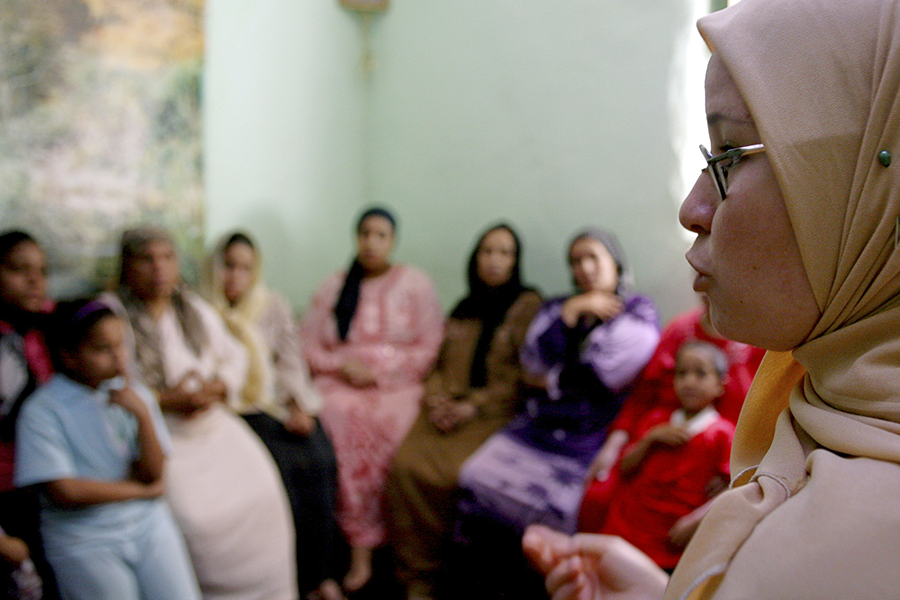How Egypt is slowly pushing back against female genital mutilation
Loading...
In many countries, the summer months are a time for young people to lay in the sun, frolic at the beach, or take a vacation. But for millions of girls around the world, summer is synonymous with the “cutting season” – the time of year when female genital mutilation (FGM) is most rampant.
The practice remains a grim reality in many parts of the world, despite efforts from governments, advocacy groups, and the international community to combat the social norms that help keep it alive. Yet those efforts are also slowly beginning to bear fruit, even in places such as Egypt, where FGM is embedded into the fabric of society.
“For centuries, female genital mutilation or cutting [was] practiced throughout much of Africa,” the United Nations Population Fund announced in 2012. “Today the movement against it is open, public and highly visible.”
FGM involves the altering, injuring, or removal of the external genitalia of women or girls for non-medical reasons – a practice that, according to the UNFP, violates the human rights and undermines the well-being of about 3 million girls in 29 countries every year.
The nation with the highest prevalence of FGM is Egypt, where over 27 million women have been mutilated to date. Despite the practice having been outlawed in 2008, FGM is still a reality for about 92 percent of married Egyptian women between 15 and 49 years old, according to a government report released in May.
But that’s starting to change, as the dangers of the practice – psychological, emotional, and physical trauma, and in some cases, death – slowly seep into public consciousness, and as the issue is broached in family and community discussions.
“There is definitely a shift on the ground in terms of the openness of people,” Mona Amin, who runs the Egyptian National Population Council’s FGM campaign, told The Guardian. “Young girls don’t feel embarrassed to talk about the problems of the practice in front of their parents. Previously even women who didn’t circumcise their daughters didn’t want to say."
“It’s a very important shift in attitude,” Ms. Amin added.
But it has been an uphill climb. Efforts to engage communities and community leaders in conversation about FGM, launch targeted media campaigns, and lobby for anti-FGM legislation had been underway for years before the 2008 government banned FGM – “a hugely important step,” Suad Abu-Dayyeh, Middle East and Africa consultant for international nonprofit Equality Now, wrote in an email to The Christian Science Monitor.
Eventually, liberal-minded imams began voicing their criticisms of FGM, and support of the practice within the religious community began to fall, The Guardian reported. The government health ministry and UNFP started retraining doctors – who still do majority of mutilations in Egypt – on the dangers of FGM.
The data began to reflect the reality: The percentage of girls between 15 and 17 years old subjected to mutilation dropped from about 74 percent in 2008 to just above 60 percent in 2014, according to recent estimates.
Then, in January, a second milestone: A doctor on trial for killing a 13-year-old girl in a botched FGM operation was found guilty of manslaughter and mutilation and sentenced to two years and three months in jail.
Anti-FGM advocates applauded the victory.
“This verdict won’t eliminate FGM but at least doctors will think 10 times before doing it,” Reba al-Danbouki, the lawyer who headed the prosecution, told The Guardian after the decision. “Every time he thinks of the money he’s being offered, he will remember this ... And also every father who thinks to do this to his daughter.”
Egypt has since pledged to reduce FGM by 10 to 15 percent in the next five years in a plan that, if successful, would mean that for the first time, the number of girls who have not had the procedure would outnumber those who had, CNN reported.
“It’s an ambitious plan, but now I think that the political atmosphere is supporting us and we can reach our goal,” Vivian Fouad, the National Population Council official who heads the government's effort against FGM, told the network. “For years we were on (the) defense, but now we’re on the offensive.”
Advocates have their work cut out for them. Despite the recent victories, FGM remains deeply embedded in places where it continues to be viewed as a necessary part of a girl’s journey to womanhood – the removal of the genitalia is often thought to enhance the “feminine” qualities of docility and obedience, while reducing a woman’s sexual desire, according to the umbrella organization End FGM European network.
Still, activists remain optimistic.
“Ending FGM takes a lot of time and effort [and] prevalence has only fallen slowly in the last few decades,” Equality Now’s Ms. Abu-Dayyeh wrote. “But we are heartened by falls [in mutilation] for younger women and girls.








